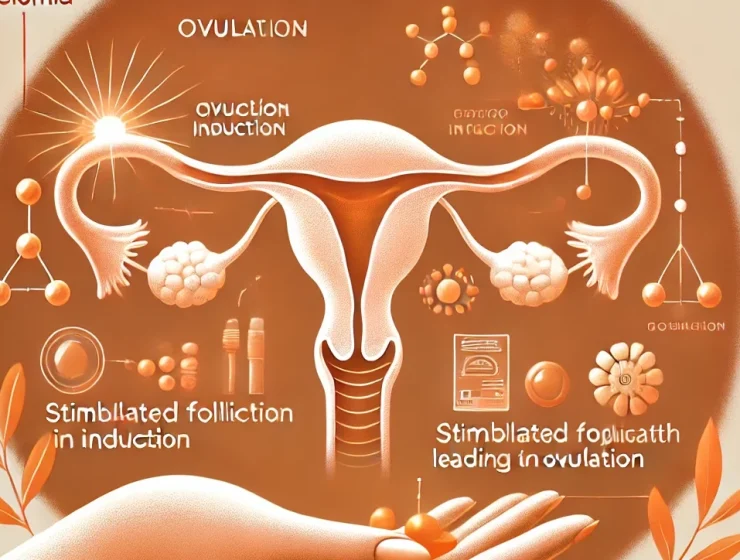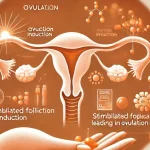Are you almost due and your baby doesn’t seem ready to meet the world yet? Don’t worry, it happens to a lot of women! Inducing labor is something that many expectant mothers want to know more about, especially if the due date passes without any movement. In this article, we’ll dive into everything you need to know about inducing labor: from natural methods to medical options, with their pros and cons. Whether you’re just curious or looking for specific information, we’ll explain it all clearly for you. Grab a glass of water, settle down on the couch, and let’s explore this fascinating topic together. Are you going to be a mom soon? Then this is exactly what you need!
Reasons to induce labor
There are times when induction of labor may be necessary. A common situation is a pregnancy that has gone beyond 42 weeks – also known as “overdue.” After this point, risks to you and your baby may increase. Other reasons include medical issues such as placental or amniotic fluid problems, maternal health concerns (such as high blood pressure), or infection. Always listen to your midwife or doctor if they suggest intervention.
Methods to induce labor:
- Mechanical start: Consider a balloon catheter or having your membranes broken by your healthcare provider.
- Medicines: Drugs such as prostaglandins or oxytocin can induce labor.
- Natural ways: Think of nipple stimulation or intimacy, although the effect varies from person to person.
Each approach has advantages and disadvantages and is not suitable for everyone. Discuss with your midwife what suits you. Below is an overview:
| Method | Description | Pros | Negatives |
|---|---|---|---|
| Mechanical | Use of aids such as a catheter. | No medication, less invasive. | Sometimes discomfort, not always success. |
| Medication | Hormones such as oxytocin via an IV. | Strong induction of labor. | Chance of side effects. |
| Naturally | Activities such as walking or sex. | Safe and simple. | Not always effective. |
Making an informed choice is essential. Discuss everything with your healthcare provider to find the best way.
When is generation necessary?
How do you know when it's time to start labor? That depends on several signals. A date that is already a while behind you is a common reason. But the health of you or your baby can also play a role. Think of complications such as gestational diabetes, high blood pressure, or waters breaking without contractions.
Key points to consider:
- Cervix: The Bishop score shows how 'ready' your body is. A high score often means a good starting position.
- Health: When there are risks, waiting can become dangerous.
- Gestational age: After 42 weeks, the placenta may not function as well. Note: before 37 weeks, these options do not apply!
Your midwife knows your situation best and will advise you on what is safe. Every pregnancy is different, so careful consideration is essential.
Stimulate childbirth naturally
Wondering how to encourage labor yourself when you’re fully pregnant? There are natural tricks, but always consult your midwife first. Here are a few common options:
- Foot massage: Reflexology focuses on points that can stimulate your uterus.
- Intimacy: Sperm contains prostaglandins and an orgasm releases oxytocin.
- Movement: Walking or yoga can help your baby settle.
- Food and drink: Spicy foods or raspberry leaf tea have been mentioned, but evidence is lacking.
Be realistic: these methods do not always work. Medical attention may be necessary. Listen carefully to your body and your doctor. See the effectiveness here:
| Method | Effectiveness |
|---|---|
| Foot massage | Changing |
| Intimacy | Reasonable |
| Movement | Low to medium |
| Food/drink | Often anecdotal |
Patience is often your best friend. Are you in doubt? Ask for professional advice.
What does a medical induction entail?
Sometimes medical intervention is necessary, for example after 42 weeks or in case of health risks. What you can expect depends on your situation and the method used:
- Prostaglandins: Hormones via gel or tablets to soften your cervix.
- Oxytocin: Through an IV to start labor.
- Waters breaking: A minor procedure to speed up labor.
- Balloon catheter: Press on the cervix to open it.
The process can take days, with constant monitoring of you and your baby. Keep talking to your healthcare provider and be flexible – every birth is unique.
Disadvantages of medical interventions
A medical induction may involve risks, such as a greater chance of interventions (snip, vacuum, or cesarean section). It interrupts the natural process, especially if contractions start completely artificially.
Other options than induction: stripping
In the Netherlands, labor is often induced at 42 weeks because of the placenta. Do you want to avoid that? Consider stripping before that time. This is not breaking the membranes, but a check where the midwife stimulates the cervix when it is dilated. This can trigger spontaneous labor without the risks of an induction. Give it a try!
Recovering after a revival
Induced labor can be intense, so recovery takes time. Rest well and let others help. Some tips:
- Move lightly: Walking helps your circulation and recovery – check with your doctor.
- Eat well: Iron-rich foods and plenty of water support your body.
Emotions can go in all directions – talk about it with your loved ones or a professional. Here are the benefits:
| Action | Benefit |
|---|---|
| Light movement | Faster recovery, better mood |
| Healthy food | Energy and healing |
| Hydration | Good for breastfeeding |
| Talking | Less tension |
Your recovery is unique – focus on you and your baby.
Questions about induction of labor
When and why is labor induced? Many parents wonder. It is done in case of medical necessity, such as being overdue, ruptured waters without contractions, or health problems. Ask your midwife for details.
How does it work?
- Medication: Gel or infusion to stimulate labor.
- Balloon: Pressure on the cervix.
- Amniotomy: Breaking membranes to speed up.
Know what you choose – consultation is key.
Resume
This article has given you insight into inducing labor – from reasons to methods. Every pregnancy is different, so always consult with your midwife.
At Verloskundigen Lelystad, in De Koploper, we wish you a safe delivery. Questions? Contact us – we are here for you!
Follow us!
Stay informed at Verloskundigen Lelystad via social media for tips and stories!
 |
 |
With warm regards,
Midwives Lelystad
Address: Badweg 21, 8223 PA Lelystad
Telephone: 085 40 19 095








